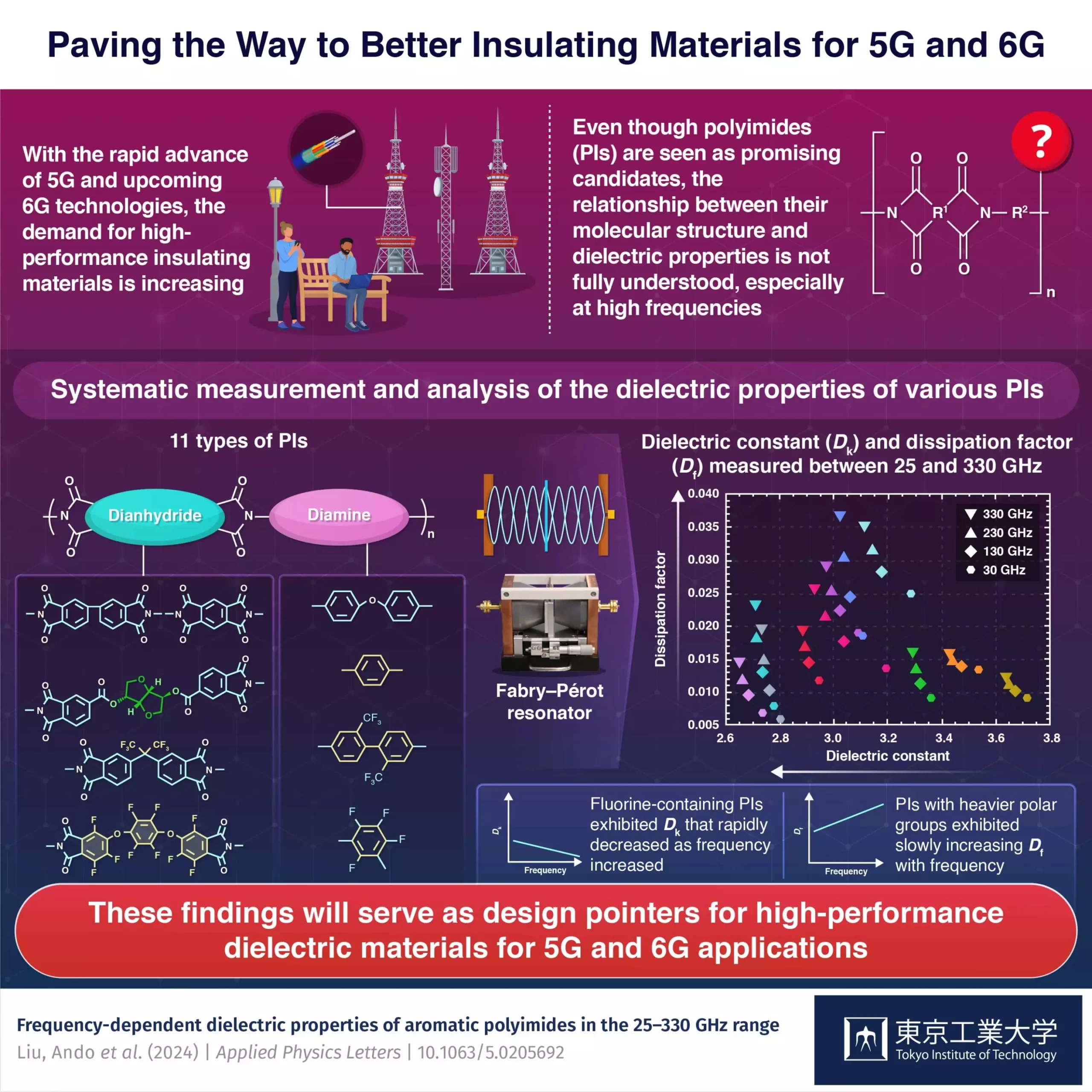With the rapid evolution of 5G technologies, scientists and engineers are already looking ahead to the possibilities of 6G. However, one of the major challenges that need to be addressed is the detrimental effects of operating at extremely high frequencies on wireless communications. As frequencies approach the terahertz range, issues such as signal attenuation and interference become more pronounced, making it harder to maintain signal integrity. While glass- and ceramic-based insulating materials have been the go-to solutions, their high cost and complexity in fabrication make them less suitable for mass-produced devices necessary for high-end 6G technology.
In the quest for better alternatives, a research team from the Tokyo Institute of Technology focused on polyimides (PIs) as potential materials for high-frequency operation. Led by Professor Shinji Ando, the team conducted a study on the dielectric properties of 11 PIs with different molecular structures. Their findings were published in Applied Physics Letters on June 6, 2024. Polyimides are known for their thermal stability, mechanical toughness, flexibility, lightweight, and favorable dielectric properties, making them promising candidates for high-frequency applications.
The research team used a Fabry–Pérot resonator to measure the dielectric properties of the PIs in the 110–330 GHz range. They focused on the dielectric constant (Dk) and the dissipation factor (Df) of the polyimides, both of which are crucial for minimizing signal loss and maintaining signal integrity at high frequencies. Interestingly, the PIs with higher fluorine content exhibited lower Dk values, with a perfluorinated polyimide standing out for its significantly lower Dk and smaller Df compared to other polyimides.
The results of the study shed light on the dielectric qualities of PIs, offering valuable insights for the development of high-performance insulating materials for 6G technologies. By understanding the correlation between molecular structure and dielectric properties, engineers can work towards faster and more reliable telecommunications in the terahertz range. While the study provides a solid foundation, further research, including spectroscopic studies in the THz range, is needed to identify the best type of PIs for future applications.
The potential of polyimides in advancing wireless communications for 6G technology is promising. By harnessing their excellent dielectric properties, researchers can overcome the challenges associated with high-frequency operation and pave the way for faster, more efficient telecommunications systems. As we look towards the future of wireless technology, continued research and development in polymeric materials like PIs will be essential in realizing the full potential of 6G technology.


Leave a Reply